- Home
- Orson Scott Card
Sarah: Women of Genesis: 1 (Women of Genesis (Forge)) Page 34
Sarah: Women of Genesis: 1 (Women of Genesis (Forge)) Read online
Page 34
Now we come to the problem of Sarah as Abram’s “sister.” An astonishing number of apologist scholars have come to believe that Genesis actually says that Sarai was the daughter of Abram’s older brother Haran, who was also the father of Lot, who was Abram’s business partner. The King James version introduces Sarai in this way: “Terah begat Abram, Nahor, and Haran; and Haran begat Lot. And Haran died before his father Terah in the land of his nativity, in Ur of the Chaldees. And Abram and Nahor took them wives: the name of Abram’s wife was Sarai; and the name of Nahor’s wife, Milcah, the daughter of Haran, the father of Milcah, and the father of Iscah” (Genesis 11:27–29).
(Here is Ur of the Chaldees, of course, and Terah and his sons could easily have been refugees from the Amorite invasion—except that Ur was a Sumerian city that did not speak a Semitic language, while Abram and his family presumably spoke an early form of Hebrew, which was probably similar to the language of the Amorites and definitely similar to the languages most commonly spoken in the region of Haran and Ur-of-the-North. That proves nothing, but disproves nothing about my suppositions, either, once you throw out “of the Chaldees” as an anachronism.)
Let’s see what this passage actually says about the people named. We know that Nahor’s wife was Milcah, and Milcah was the daughter of Haran, and that Haran was (redundantly) the father of Milcah and the father of Iscah. But we also know that Lot’s father, Haran, was the brother of Abram and the son of Terah. So apparently Abram’s brother Nahor married the daughter of his brother Haran. So, since a man could marry his niece, say the apologists, why couldn’t Sarai also have been a daughter of Haran, and therefore, since Abram regarded Lot as his brother, couldn’t he also have regarded Sarai as his sister, besides being his wife and his niece, and thus when he told both Pharaoh and Abimelech that Sarai was his sister, he wasn’t lying.
And there you have the whole reason why the apologists go on this silly guessing expedition—they are desperate to show that Abram didn’t lie when he called Sarai his sister. Which absolutely baffles me. Why shouldn’t he lie if the Lord told him to, or even the Lord didn’t tell him to, if it was necessary to save his life? There is such a thing as a pious lie—the opposite of bearing false witness against your neighbor, it is the lie told to save the righteous from destruction by the wicked.
But setting aside the question of whether all lies are sins (they aren’t, necessarily, but let’s not argue), the fact remains that there is nothing in the text, at least as translated in the King James Version, that even implies that Abram married his niece. For one thing, the text specifically identifies Milcah, Nahor’s wife, as the daughter of Haran, and never says a thing about Sarai’s parentage. And for another thing, it seems plain to me that this passage is speaking of two different Harans. There is Haran, the son of Terah and father of Lot—the Haran, in other words, who died. And then the scripture mentions that Nahor married Milcah, the daughter of a different Haran, who is identified as “Haran the father of Milcah and the father of Iscah.” I mean, if the writer or oral storyteller wanted us to know that the same Haran who was the father of Lot was also the father of Milcah, why would he tag him without referring to Lot at all, and instead bring up “Iscah,” whoever that is? No, the intent seems obvious to me—the storyteller wants us to know that Haran the father of Milcah is a different Haran from the other one already named.
Nobody married his niece. Not Nahor, and not Abram. Marrying siblings and other near relations was not unheard of in some places, and was very common in Egypt’s ruling class, but it is certainly not the rule in the culture of Abraham and his descendants. They could marry cousins, but no one closer. So if the text does not require us to believe in consanguinous marriage of this degree, our predisposition should not be to accuse Abram of incest in order to excuse him from a life-saving lie.
That’s why, in this book, Sarai is born a princess but named in a non-Semitic language, and she is not Abram’s niece and she is not Lot’s sister. I believe the text permits and even encourages my decisions.
Of course, I’m not above flat-out manipulation for fictional purposes. There isn’t the slightest reason, in the text, to suppose that Abram’s wife and Lot’s wife were related in any way. I made them sisters because it was useful and interesting to me in telling the tale to give them a connection that allowed us to see Lot’s wife through her own eyes and also through the eyes of a sister who didn’t like her much, but still cared about her.
Speaking of Lot’s wife—Qira, in this novel—it’s worth noting that the “pillar of salt” story is one that I take as a later interpolation. Why? Because there really are a whole bunch of salty deposits not all that far from Sodom’s probable location to the southeast of the Dead Sea. Some of them rather resemble very small people. It’s so easy to imagine a group of people passing through there, getting spooked by the weird humanoid forms of some of the salt pillars, and then around the fire that night, one of the travelers saying, “You know, one of those pillars really is a person. Lot’s wife. Yep, she was forbidden to look back when God destroyed the city, and when she did it anyway, she was turned into a pillar of salt.” In short, it seems likely to be a “just-so” story, like the tale of Elisha and the bears, and Joseph and the Egyptian practice of storing grain in fat years to provide for the lean years. But I might be wrong. Because I also have a personal preference for the idea of an omnipotent but parsimonious God. If he warns the righteous to get out of Sodom because it’s going to be hit by a meteor shower, he lets the meteors have their effect on the disobedient, and doesn’t fuss with a whole separate miracle just to get one woman for daring to look back—especially since the punished-for-looking-back story is such a common one in world folklore. That doesn’t prove anything. It’s just my preference. If I’m wrong, it’s not like I erased the Bible. The story is still there, intact, as written. All I’ve written here is a novel, one view of how things might have happened, and what kind of people they might have happened to.
Which is not to say that I take my own work lightly. On the contrary, I take it very seriously, and I wrestled with these issues so long and researched the surrounding information so seriously that I ended up turning in the manuscript one very inconvenient year late. And after all that work, I know I’ve undoubtedly still made mistakes and missed out on important information that would have made the novel better had I gotten it right. But I can only tell the story that seems right and true to me at the time I wrote it, using the information that I had available. One of my goals was to give the story a plausible setting, but that was only to support my main purpose: To tell the story of Sarah in such a way as to make her come to life as a real person in the mind of my readers. The research was all undertaken in support of that purpose. And I’d like to think that, by bringing my understanding of the surrounding culture to bear on this story, I will have been able to help readers understand how Sarah might have come to make the choices she made in her life, and why Abraham loved her, and why Isaac honored her so much that when his wife Rebecca came to live with him, it was said that she dwelt in Sarah’s tent—years after Sarah died.
This woman was remarkable, desirable to kings, seemingly harsh and yet also chosen by God. I think the harshness she showed toward Hagar was not only justified, it was probably overdue—just on the evidence already visible in the Genesis account, in which Hagar is already shown to be in conflict with Sarah almost as soon as Hagar conceives a child with Abraham. So in a sense I suppose I’m an apologist, too. But instead of being an apologist for God or Abraham, who need no defense from me, I’m an apologist for Sarah, a tough, smart, strong, bright woman in an era when women did not show up much in historical records. It’s one of the things that’s so remarkable about the book of Genesis. There aren’t many other writings from that period that give women so much stage time as the chapters about Abraham, Isaac, and Jacob. Of course, the whole of Israelite scripture has this remarkable trait—Eve, Deborah, Jael, Naomi, Ruth, Esther, Bathsheba, Abigail, Tamar
, and even Shiphrah and Puah—the Hebrew scriptures are, by the standards of the day, practically bursting with women, named women, who are often the heroes of the story.
The writers of the Old Testament took women very seriously. But nowhere are women more centrally involved in the lives of great and holy men than in the accounts of Abraham, Isaac, and Jacob. In some senses the women can be seen as driving the story; certainly the storytellers want us to see that marrying these women so they can be the mothers of the next generation of holy men is one of the most important things that these prophets can do. And sometimes the will of God is first discovered by or best protected by the wife, and not the husband—as we will see in the next book in this series, about Rebecca, the wife of Isaac.
For now, though, I hope only that the reader will grant me, if not agreement with my choices, then indulgence. I did not whimsically discard anything from the story. Every important omission or change from the common interpretation was deliberate and took place only after great thought and serious attempts at research into what is known about the surrounding culture at the probable time of these events. So if I have erred, it was in the attempt to approach the truth contained in the Bible, and never in disregard of it.
Here are some of the sources I used in preparing this book. They are all interesting and valuable books, even if I often drew conclusions that the authors might not have been pleased with, and even though some of the scholars, at least, were quite avidly of the rejectionist camp. I consulted many other books, but these were the ones I found most useful and trustworthy, and which I intend to use again as sources.
Donald B. Redford, Egypt, Canaan, and Israel in Ancient Times (Princeton University Press, 1992)
Gösta W. Ahlström, The History of Ancient Palestine (Sheffield Academic Press/Fortress Press, 1993, 1994)
Gay Robins, Women in Ancient Egypt (Harvard University Press, 1993)
Michael Rice, Egypt’s Making: The Origins of Ancient Egypt, 5000–2000 b.c. (Routledge, 1990)
And for those who do not immediately recognize the source of some of the events early in the novel, those are based on the book of Abraham in The Pearl of Great Price, a book of scripture recognized only within the LDS Church.
Peter James and Nick Thorp, Ancient Mysteries (Ballantine, 1999). The great care these authors took in verifying speculation and drawing evidence from many disciplines made this a fascinating and useful tool—especially concerning the location of Sodom and the events surrounding its destruction.
If you have questions or comments about any aspect of this novel, you are invited to visit http://www.hatrack.com or http://www.nauvoo.com.

 Shadows in Flight
Shadows in Flight Ender in Exile
Ender in Exile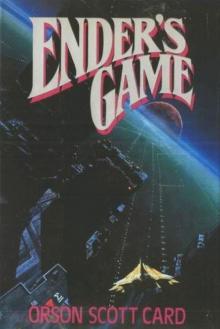 Ender's Game
Ender's Game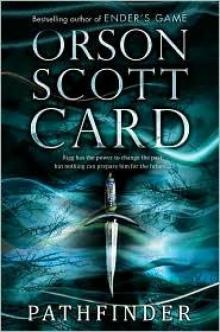 Pathfinder
Pathfinder Children of the Fleet
Children of the Fleet Children of the Mind
Children of the Mind Ruins
Ruins Speaker for the Dead
Speaker for the Dead Ender's Shadow
Ender's Shadow Folk of the Fringe
Folk of the Fringe Hart's Hope
Hart's Hope Shadow of the Giant
Shadow of the Giant Empire
Empire Shadow Puppets
Shadow Puppets Earth Afire
Earth Afire First Meetings in Ender's Universe
First Meetings in Ender's Universe Maps in a Mirror: The Short Fiction of Orson Scott Card
Maps in a Mirror: The Short Fiction of Orson Scott Card Xenocide
Xenocide The Swarm: The Second Formic War
The Swarm: The Second Formic War Saints
Saints Seventh Son: The Tales of Alvin Maker, Volume I
Seventh Son: The Tales of Alvin Maker, Volume I Zanna's Gift
Zanna's Gift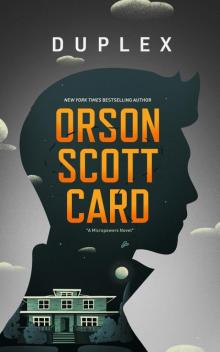 Duplex
Duplex Zanna's Gift- a Life in Christmases
Zanna's Gift- a Life in Christmases Hidden Empire
Hidden Empire Earth Awakens
Earth Awakens Visitors
Visitors Shadow of the Hegemon
Shadow of the Hegemon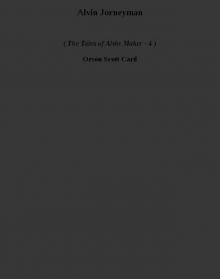 Alvin Jorneyman ttoam-4
Alvin Jorneyman ttoam-4 Federations
Federations The Gate Thief mm-2
The Gate Thief mm-2 First Meetings
First Meetings Capitol
Capitol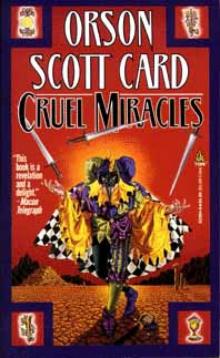 Cruel Miracles
Cruel Miracles Shadows in Flight, enhanced edition
Shadows in Flight, enhanced edition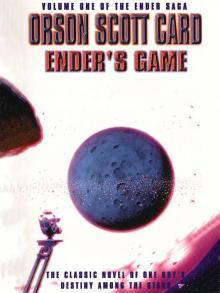 Ender's Game es-1
Ender's Game es-1 Ruins (Pathfinder Trilogy)
Ruins (Pathfinder Trilogy) Ender's Shadow ew-6
Ender's Shadow ew-6 The Swarm
The Swarm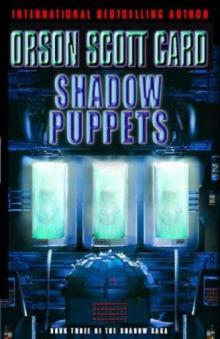 Card, Orson Scott - Ender's Saga 7 - Shadow Puppets
Card, Orson Scott - Ender's Saga 7 - Shadow Puppets Lost Boys: A Novel
Lost Boys: A Novel Mazer in Prison
Mazer in Prison Treason
Treason Heal Thyself
Heal Thyself The Call of Earth
The Call of Earth Songmaster
Songmaster Heartfire ttoam-5
Heartfire ttoam-5 Pastwatch
Pastwatch Gatefather
Gatefather The Ships of Earth: Homecoming: Volume 3
The Ships of Earth: Homecoming: Volume 3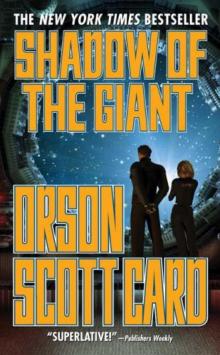 Orson Scott Card - Ender 08 - Shadow of the Giant
Orson Scott Card - Ender 08 - Shadow of the Giant Flux
Flux Speaker for the dead ew-2
Speaker for the dead ew-2 Grinning Man
Grinning Man Ruins sw-2
Ruins sw-2 Earth Unaware
Earth Unaware The Worthing Saga
The Worthing Saga Earthfall (Homecoming)
Earthfall (Homecoming) Card, Orson Scott - Ender's Saga 5 - Ender's Shadow
Card, Orson Scott - Ender's Saga 5 - Ender's Shadow The Abyss
The Abyss Magic Street
Magic Street Masterpieces
Masterpieces Prentice Alvin ttoam-3
Prentice Alvin ttoam-3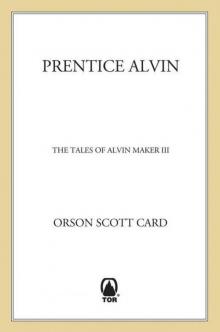 Prentice Alvin: The Tales of Alvin Maker, Volume III
Prentice Alvin: The Tales of Alvin Maker, Volume III Card, Orson Scott - Ender's Saga 3 - Xenocide
Card, Orson Scott - Ender's Saga 3 - Xenocide Homeless in Hell
Homeless in Hell Red Prophet: The Tales of Alvin Maker, Volume II
Red Prophet: The Tales of Alvin Maker, Volume II Earthborn (Homecoming)
Earthborn (Homecoming)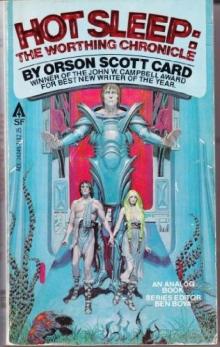 Hot Sleep
Hot Sleep The Hive
The Hive Rachel and Leah (Women of Genesis)
Rachel and Leah (Women of Genesis) Ender's World
Ender's World The Memory of Earth
The Memory of Earth Seventh Son ttoam-1
Seventh Son ttoam-1 Wyrms
Wyrms A Town Divided by Christmas
A Town Divided by Christmas Earth unavare (the first formic war)
Earth unavare (the first formic war) The Shadow of the Hegemon - Orson Scott Card
The Shadow of the Hegemon - Orson Scott Card Earthfall
Earthfall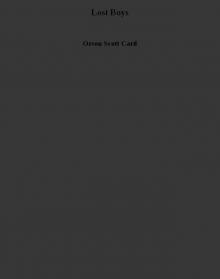 Lost Boys
Lost Boys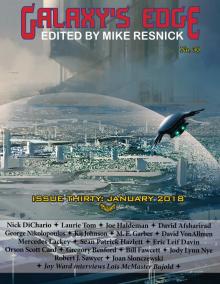 Galaxy's Edge Magazine
Galaxy's Edge Magazine Sarah: Women of Genesis: 1 (Women of Genesis (Forge))
Sarah: Women of Genesis: 1 (Women of Genesis (Forge)) The Crystal City: The Tales of Alvin Maker, Volume VI
The Crystal City: The Tales of Alvin Maker, Volume VI Xenocide ew-4
Xenocide ew-4 Earth Afire (The First Formic War)
Earth Afire (The First Formic War) Maps in a Mirror
Maps in a Mirror Pathfinder sw-1
Pathfinder sw-1 Red Prophet ttoam-2
Red Prophet ttoam-2 THE CRYSTAL CITY
THE CRYSTAL CITY 27 Short Stories
27 Short Stories Heartfire: The Tales of Alvin Maker, Volume V
Heartfire: The Tales of Alvin Maker, Volume V Alvin Journeyman: The Tales of Alvin Maker, Volume IV
Alvin Journeyman: The Tales of Alvin Maker, Volume IV Earth Awakens (The First Formic War)
Earth Awakens (The First Formic War) THE SHIPS OF EARTH
THE SHIPS OF EARTH The Changed Man
The Changed Man Future on Fire
Future on Fire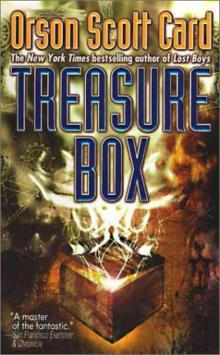 Treasure Box
Treasure Box The Gate Thief
The Gate Thief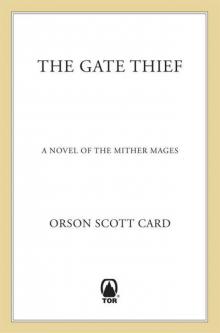 The Gate Thief (Mither Mages)
The Gate Thief (Mither Mages) First Meetings In the Enderverse
First Meetings In the Enderverse Earthborn
Earthborn Seventh Son
Seventh Son Pastwatch: The Redemption Of Christopher Columbus
Pastwatch: The Redemption Of Christopher Columbus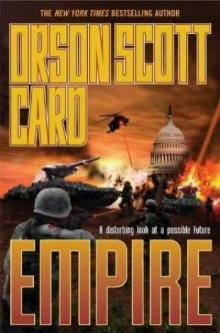 Empire e-1
Empire e-1 Keeper of Dreams
Keeper of Dreams Card, Orson Scott - Ender's Saga 1 - Ender's Game
Card, Orson Scott - Ender's Saga 1 - Ender's Game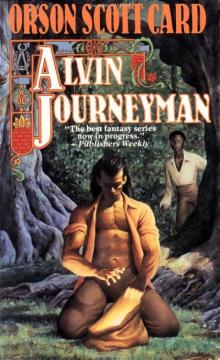 ALVIN JOURNEYMAN
ALVIN JOURNEYMAN The Lost Gate
The Lost Gate Feed The Baby Of Love
Feed The Baby Of Love Hot Sleep: The Worthing Chronicle
Hot Sleep: The Worthing Chronicle